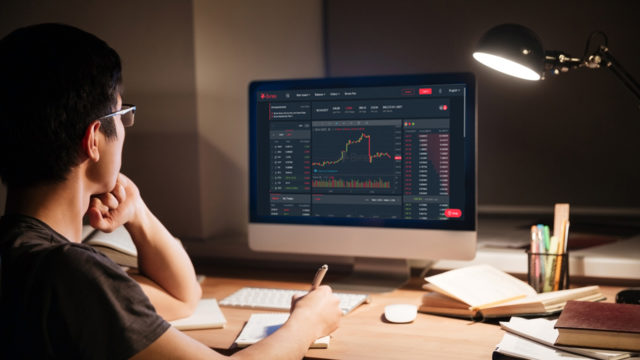When it comes to predicting the price of a cryptocurrency, there are many methods that advanced crypto traders utilize to read the market. Though crypto is highly volatile, and no single approach will perfectly predict the market’s movement, these analysis tools can help you decide when to trade, buy, or sell. Here’s a quick look at how traders use analysis to make predictions in the crypto market.
Technical Analysis
Technical analysis is the more common type of prediction in the cryptocurrency market. The method uses indicators and crypto chart patterns to evaluate the status and expected direction of the price of a digital currency. The analysis is purely based on a coin’s past performance and prevailing conditions.
Some traders use technical analysis to determine when they should enter or exit an asset, while others use it to predict future price movements. There are many different approaches that you can take when conducting technical analyses on your favorite coins, but there are two main types: fundamental analysis and charting patterns/indicators.
Technical indicators can be used to predict price movements because they identify trends or reversals in prices and areas where prices are likely to reverse or continue moving in one direction. These patterns may also change over time, so traders must keep up with new developments in their favorite indicators.
Crypto indicators are simple patterns you can use to predict future market movements. They’re called “indicators” because they help you make accurate predictions based on historical data. That means if a particular pattern frequently occurs in the past, it will likely happen again in the future.
Traders and investors often use indicators for market analysis and prediction, but not everyone knows how to interpret them correctly or what they mean beyond their face value. You can join the FTT DAO crypto community to learn more about crypto indicators and how you can easily apply these to your investment portfolio.
Fundamental Analysis
Fundamental analysis determines a coin’s intrinsic value or worth based on its underlying technology, team, marketing, and adoption. In other words, it means looking at how other traders feel about certain coins through online forums and social media platforms to determine whether they are optimistic or pessimistic about a particular currency. This can then help them understand what that coin’s price will be in the future.
Fundamental analysis is not as popular as technical analysis because it is a subjective analysis which means it relies heavily on your personal opinion rather than hard facts and figures.
Market Sentiment Analysis
Market sentiment analysis is a way to predict the general direction of a coin’s price based on how its users and investors perceive it. This can help you better understand whether the market thinks the coin will go up or down, which allows you to make better decisions about when to buy or sell. In this method, investors look at how other traders feel about certain coins through online forums and social media platforms.
The main advantage of using this strategy is that it gives you an idea of what the majority thinks about a particular cryptocurrency. If most people believe it will rise in value, then perhaps it will. On the other hand, if most people think it will fall in price and become worthless, you may stay away from trading with your money until things change for the better.
How to Minimize Your Risk in the Crypto Market
The crypto market is a risky investment, and there’s no way to get around that fact. However, there are some steps you can take that will help minimize your risk:
● Trade with a small amount of money. The smaller your position size, the less it will cost if you exit the trade at a loss because of unexpected volatility or an unforeseen event.
● Set stop-loss orders at critical levels in case of the adverse price action (i.e., sell if the price goes below $X). This is one way to protect yourself from incurring an unrecoverable loss on any trade—in other words, don’t let bad trades become worse than they need to be by waiting for them to correct themselves before selling.
● Don’t trade when tired or stressed out – this could lead to rash decisions where you take on more risk than intended!
● Diversify your investment portfolio with multiple cryptocurrencies and other non-crypto investments so you don’t put all your eggs in one basket.
Keep in mind that there are no guarantees in cryptocurrency trading, and even if you avoid making a bad trade, it could still cost you money. Before diving in, ensure you understand all the risks associated with this type of investment.









